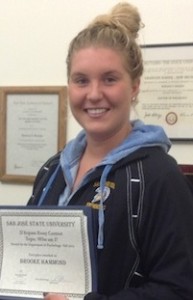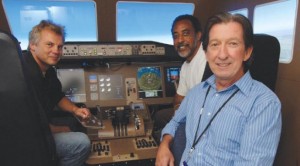by Natalie Cabral
Spartan Daily, Nov 7, 2012
http://spartandaily.com/90412/sjsu-vital-program-reaches-out-to-student-vets
Arriving back in the United States after seven years of service in the U.S. Army was not an easy transition for global studies major Dustin Delzell.
“It was hard,” Delzell said, “It sucked and it still sucks. You leave a place where everybody thinks and acts like you do and then come here where nobody thinks or acts like you do.”
The grant program Veterans Integration to Academic Leadership (VITAL) initiative has been put into place on campus since early 2012 in order to help veterans such as Delzell successfully transition
Damian Bramlett, the program’s veteran coordinator, said the purpose of the initiative is not only to provide a major source of veteran information regarding recent GI bills, but to assist with the unique struggles a veteran faces transitioning into the college atmosphere.
“These veterans need a climate where they’re not getting flack for being a veteran too,” Bramlett said.
The initiative, according to Bramlett, was a grant opportunity discovered last December that had already been successfully established at five colleges and universities in the U.S.
After submitting a proposal created by
“In March we began the foundations for the program,” he said, “That included every little thing from business cards and brochures which aren’t paid for with the grant money.”
According to Bramlett, the initiative’s grant only includes funding for his salary and a student assistant’s.
“We’ve used outside donors to help us out and that’s been great,” he said.
Since the program’s establishment on campus, Bramlett has worked to reach out to each and every veteran on campus through word of mouth, emails and advocacy.
“This initiative helps them with trying to finish their goal of finishing college,” Bramlett said.
The initiative allows him to provide information about physical and mental health counseling, financial help regarding the GI bill and housing assistance to all veterans on campus, according to Bramlett.
According to psychology professor Elena Klaw, the initiative helps create the type of community that can be a solution for veterans who feel a sense of isolation at SJSU.
In addition, Klaw also teaches a class through the Veterans Student Organization (VSO) titled Warriors at Home.
The course discusses issues relevant to veteran life such as post traumatic stress disorder, traumatic brain injuries, depression, anxiety and healthy relationships, according to Klaw.
“It creates a community of veterans and mutual support,” Klaw said, “We know veterans are at a higher risk of things like suicide and violence in relationships, but social support is an important remedy.”
Mark Pinto, vice president of the Veterans Student Organization, served 20 years in the Marine Corps as a helicopter pilot and said veterans can use this initiative to gain a sense of visibility on campus.
“A lot of these young soldiers come back with traumas and issues,” Pinto said, “They feel isolated and they’ll find reasons to just drop out.”
Pinto said the importance of providing information to veterans about scholarships, work study, financial help and grants is crucial to feeling involved in the veteran community.
“Anything we can do to make people find a location to connect and reach out will create a sense of community,” Pinto said, “It’ll also bridge that gap of veterans and students.”
For Delzell, it is a gap that is all too real.
“We have different needs than a regular student,” he said. “The job title Damian holds is indispensable.”
 friend, a student, an athlete. Just a girl in a universe of billions.” Of course, the subtle complexity of this question showed its face immediately with Brook’s second sentence. “The real question is who I think I am.” What followed was an honest and thought-provoking reflection on thoughts, opinions, beliefs, and experiences; the result of which comprise who Brook thinks she is at this moment in time.
friend, a student, an athlete. Just a girl in a universe of billions.” Of course, the subtle complexity of this question showed its face immediately with Brook’s second sentence. “The real question is who I think I am.” What followed was an honest and thought-provoking reflection on thoughts, opinions, beliefs, and experiences; the result of which comprise who Brook thinks she is at this moment in time.
